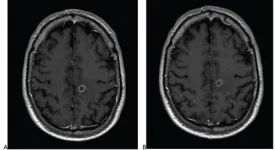(Press-News.org) Additive manufacturing offers an unprecedented level of design flexibility and expanded functionality, but the quality and process can drastically differ across production machines, according to Hui Yang, a professor of industrial engineering at Penn State. With applications in aerospace, health care and automotive industries with potential for mass customization, additive manufacturing needs quality management.
To address this concern, Yang and a team of researchers from Penn State, University of Nebraska--Lincoln and the National Institute of Standards and Technology (NIST) proposed the design, development and implementation of a new data-driven methodology for quality control in additive manufacturing. They published their work in the Proceedings of Institute of Electrical and Electronics Engineers (IEEE).
"Like an ecosystem, we have people working in isolated efforts in different areas of additive manufacturing, and systems engineers can help connect the dots to provide a framework for quality management," Yang said. "Quality is indispensable, and if we design a system-level framework of quality management from the start, then we have higher quality and better productivity at less cost. Ultimately, everyone wants to do high-precision, high-end manufacturing, but if quality suffers at any step during production, you lose the competitive advantage needed for the global market. Leveraging data to control and ensure high quality products helps keep that advantage."
The team worked together to analyze various academic papers to deduce a six sigma framework of quality control for additive manufacturing, which lead to their proposed systems engineering approach.
The method hinges on six sigma, a popular approach that uses data-driven tactics to eliminate defects, drive profits and improve quality of products. Through their detailed analysis, the team suggested that this five-step approach of defining, measuring, analyzing, improving and controlling can further the quality management when applied to additive manufacturing.
"Via the research we analyzed, we identified the critical challenges of additive manufacturing and where quality standards are lacking," Yang said. "For each step in the process, you need to identify the sticking points, which is where methods such as machine learning can come into play and help show an engineer or designer how to control the process to avoid defects."
Tim Simpson, Paul Morrow Professor in Engineering Design and Manufacturing and professor of mechanical engineering at Penn State, explained that such defects can become massive liabilities when considered in the context of mass-produced products.
"If your goal is to use additive manufacturing to make parts for a car or a plane, then that part better not fail," Simpson said.
He also noted the cost of failed parts can add up -- a failed metal build, he said, could "easily cost 10 to 20 thousand dollars and require multiple iterations along the way."
By looking for the quality gaps in the standards for mass-produced parts, Simpson said their proposed methodology is critical to ensure quality production with additive manufacturing for both high volume and custom products.
"Quality control processes and methods are established for mass production, where you make hundreds to millions of things," Simpson said. "Additive manufacturing enables customization, and the current quality control methods and accepted practices do not readily apply when you are only making one or a few of an item. We have to think differently to ensure highly quality parts."
Soundar Kumara, Allen E. Pearce and Allen M. Pearce Professor of Industrial Engineering at Penn State, noted that their review represents the state-of-the-art additive manufacturing technologies and can help researchers by providing a comprehensive understanding of the tools and techniques.
INFORMATION:
The authors include Yang; Prahalad Rao, associate professor of mechanical and materials engineering at the University of Nebraska--Lincoln; Yan Lu, NIST; Paul Witherell, NIST; Abdalla R. Nassar, associate research professor of engineering science and mechanics and mechanical engineering at Penn State; and Edward Reutzel, associate research professor engineering science and mechanics at Penn State.
CAMBRIDGE, MA--Geothermal energy systems have the potential to power the world and become the leading technology for reducing greenhouse gas emissions if we can drill down far enough into the Earth to access the conditions necessary for economic viability and release the heat beneath our feet. END ...
SAN ANTONIO (June 17, 2021) -- Convalescent plasma therapy was associated with better survival in blood cancer patients hospitalized with COVID-19, especially in sicker patients. The findings by the COVID-19 and Cancer Consortium (CCC19) are newly published in the peer-reviewed journal JAMA Oncology.
The Mays Cancer Center, home to UT Health San Antonio MD Anderson, is part of the CCC19. The international consortium is composed of 124 medical centers and institutions in North and South America that conduct research to learn how COVID-19 affects cancer patients.
Dimpy Shah, MD, PhD, is an epidemiologist and assistant professor of population health sciences at The University of Texas Health ...
Forest fires have crept higher up mountains over the past few decades, scorching areas previously too wet to burn, according to researchers from McGill University. As wildfires advance uphill, a staggering 11% of all Western U.S. forests are now at risk.
"Climate change and drought conditions in the West are drying out high-elevation forests, making them particularly susceptible to blazes," says lead author Mohammad Reza Alizadeh, a PhD student at McGill University under the supervision of Professor Jan Adamowski. "This creates new dangers for mountain communities, with impacts on downstream water supplies and the plants and wildlife that call these forests home."
Climate warming has diminished 'flammability barrier'
In ...
If the genome is the recipe of life, base pairs are the individual ingredients listed. These chemical structures form DNA, and every living organism on Earth has just four. The specific arrangements of these four base pairs -- A, T, C, G -- make us who and what we are.
So it was a big surprise when Scripps Research scientists revealed in 2014 that they could introduce two new, unnatural base pairs (they called them X and Y for short) into the genetic code of living bacteria in the lab. It was like two never-seen-before ingredients tossed into the recipe, hypothetically expanding the variety of dishes a cell can whip up.
Researchers immediately saw the potential applications: With more control and selection, they ...
In a bid to find or refine laboratory research models for cancer that better compare with what happens in living people, Johns Hopkins Medicine scientists report they have developed a new computer-based technique showing that human cancer cells grown in culture dishes are the least genetically similar to their human sources.
The finding, they say, should help focus more resources on cancer research models such as genetically engineered mice and 3D balls of human tissue known as "tumoroids" to better evaluate human cancer biology and treatments, and the genetic errors ...
An algorithm designed by researchers from Carnegie Mellon University's Computational Biology Department and St. Petersburg State University in Russia could help scientists identify unknown molecules. The algorithm, called MolDiscovery, uses mass spectrometry data from molecules to predict the identity of unknown substances, telling scientists early in their research whether they have stumbled on something new or merely rediscovered something already known.
This development could save time and money in the search for new naturally occurring products that could be used in medicine.
"Scientists waste a lot of time isolating molecules that are already known, essentially rediscovering penicillin," said Hosein Mohimani, an assistant ...
Leesburg, VA, June 17, 2021--According to ARRS' American Journal of Roentgenology (AJR), a reduced dose of gadobutrol is non-inferior to 100%-standard dose of gadoterate for contrast-enhanced brain MRI.
"A 25% reduced gadobutrol dose demonstrated non-inferior efficacy versus standard dose gadoterate for contrast-enhanced brain MRI," corresponding author Jan Endrikat of Germany's University Medical School of Saarland elaborated, "warranting particular consideration in patients undergoing multiple contrast-enhanced examinations."
In this international, prospective, multicenter, open-label, crossover trial (LEADER-75), 141 patients (78 men, 63 women; mean age, 58.5 years) with known or suspected CNS pathology ...
Type 1 diabetes is a disorder in which the immune system inappropriately targets a class of cells in the pancreas known as β cells that produce the hormone insulin, which plays an important role in regulating bloodstream glucose levels and the metabolism of carbohydrates, lipids, and proteins. The loss of insulin causes a range of health problems for people with type 1 diabetes, and patients become dependent on insulin injections for their survival. Even with insulin therapy, people with type 1 diabetes have shortened lifespans and are at an elevated risk of developing myriad complications.
Previous studies have identified numerous genetic risk factors for type 1 diabetes. One notable finding is the importance of the HLA region, a part of the human ...
New technologies allow users to do things like race their real bikes against other real people in a virtual world, and a new study outlines what motivates people to use these online platforms. The findings offer insights for future iterations of these technologies - and how to market them.
At issue are "mixed-reality sports": augmented reality platforms that incorporate virtual, online elements and real-world athletic endeavors. For example, Zwift is a platform that allows users to ride their real bicycles, but transfers their efforts to a virtual space depicting real-world courses - allowing them to race against other cyclists who are not physically present.
"We ...
Medical guidelines help doctors understand the best way to treat health conditions. Surprisingly, many doctors do not adhere to them, and this is a problem, according to a new study by scientists at University of Utah Health and MDGuidelines. People with lower back pain injury miss 11 more days of work in a year when they only receive treatments for lower back pain that are not recommended by medical guidelines compared to people treated according to guidelines. The findings publish in END ...

